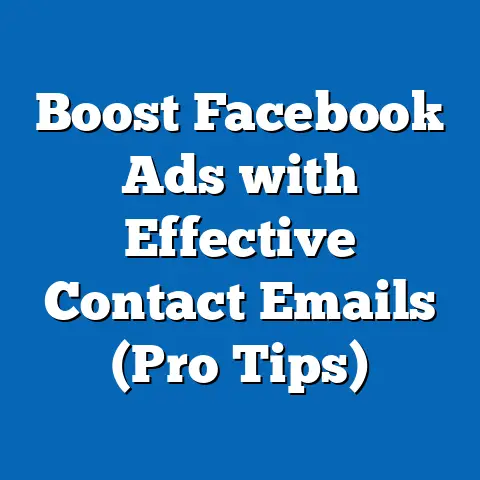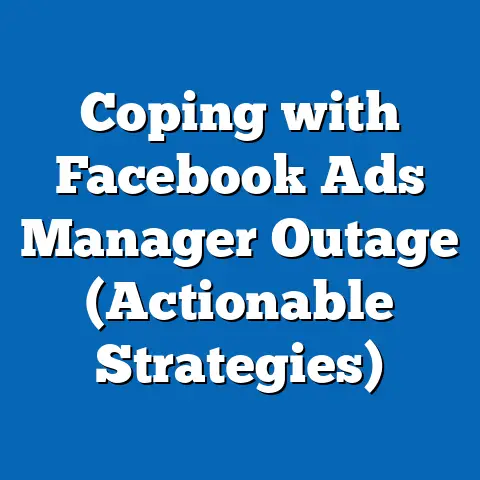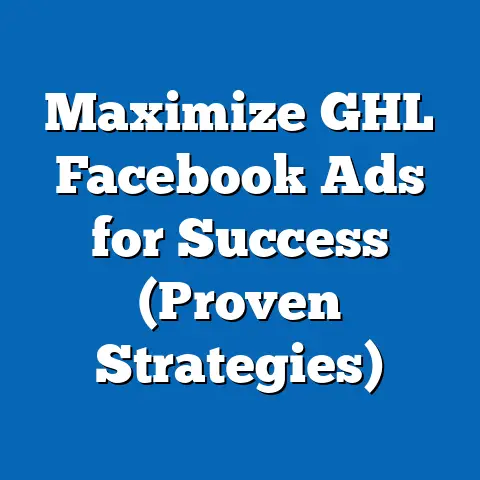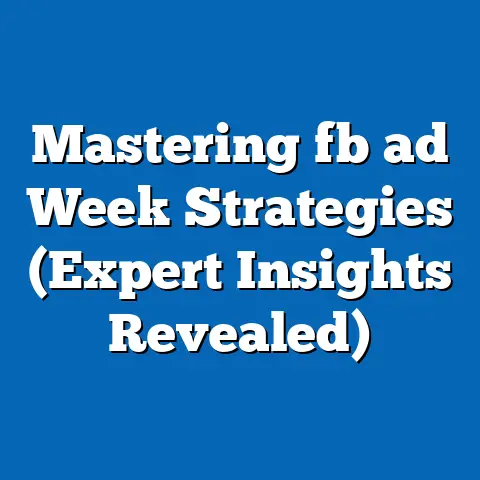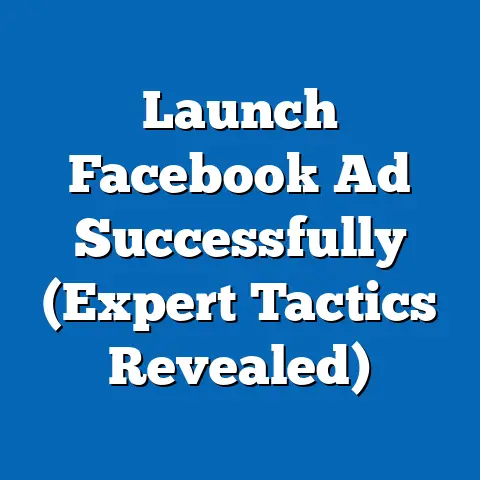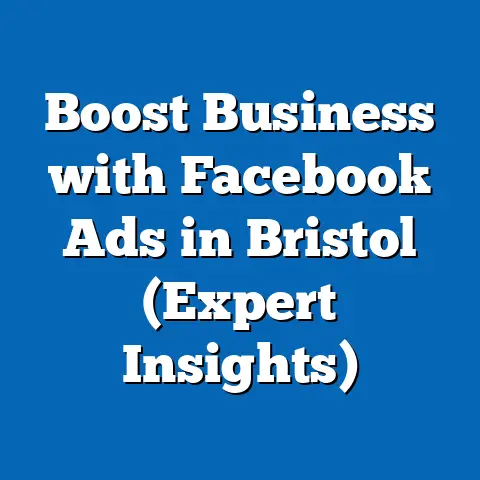Boost Likes with Proven Facebook Ad Strategies (Ultimate Guide)
Have you ever scrolled through your Facebook feed and wondered how some brands and individuals seem to effortlessly rack up likes and engagement on their posts? Maybe you’ve even felt a pang of envy, wishing you could unlock the secrets to building a thriving online presence. I get it. We all want to feel seen and heard, and in today’s digital landscape, likes have become a form of social currency.
The truth is, while organic reach on Facebook has become increasingly challenging, the platform still offers incredible opportunities for growth through strategic advertising. And that’s where I come in. I’ve spent years navigating the ever-evolving world of Facebook ads, and I’m here to share my insights and experiences to help you boost your likes and build a stronger connection with your audience.
This isn’t just about vanity metrics; it’s about building social proof, increasing brand visibility, and fostering a community around your brand. In this ultimate guide, I’ll walk you through proven Facebook ad strategies that will not only increase your likes but also drive meaningful engagement and ultimately contribute to your business goals. So, let’s dive in and unlock the power of Facebook advertising together!
Understanding Facebook Ads
Facebook ads are, simply put, paid messages that businesses and individuals use to reach a specific audience on the Facebook platform. In the realm of social media marketing, they serve as a powerful tool for increasing brand awareness, generating leads, driving website traffic, and, of course, boosting likes. Unlike organic posts, which are only seen by a small percentage of your followers, Facebook ads allow you to target a much wider audience based on demographics, interests, behaviors, and more.
Types of Facebook Ads for Boosting Likes
Facebook offers a variety of ad formats, each with its own strengths and weaknesses. Here are a few of the most effective options for boosting likes:
- Photo Ads: These are simple yet effective ads that feature a single image or video. They’re great for showcasing your product, service, or brand in a visually appealing way. I’ve found that high-quality, eye-catching visuals are crucial for capturing attention in a crowded news feed.
- Video Ads: Video ads are incredibly engaging and can be used to tell a story, demonstrate a product, or share valuable information. Short, attention-grabbing videos tend to perform best, especially when optimized for mobile viewing.
- Carousel Ads: Carousel ads allow you to showcase multiple images or videos in a single ad unit. This format is perfect for highlighting different aspects of your product, service, or brand, or for telling a sequential story.
- Slideshow Ads: Slideshow ads are similar to video ads but are created using a series of still images. They’re a great option for businesses that don’t have the resources to create high-quality video content.
The Importance of Targeting and Facebook’s Algorithm
One of the biggest advantages of Facebook ads is the platform’s sophisticated targeting capabilities. You can target your ads to people based on a wide range of factors, including:
- Demographics: Age, gender, location, education, job title, and more.
- Interests: Hobbies, passions, and things people are interested in.
- Behaviors: Purchase history, online activity, and more.
- Custom Audiences: You can upload your own customer list or create a lookalike audience based on your existing customers.
Facebook’s algorithm plays a crucial role in determining which ads are shown to which users. The algorithm takes into account a variety of factors, including ad relevance, bid amount, and user engagement. The more relevant your ad is to the user, the more likely it is to be shown and the more likely it is to generate likes.
Engagement Metrics: Likes and Beyond
While likes are a valuable metric for measuring social proof and engagement, it’s important to remember that they’re just one piece of the puzzle. Other important engagement metrics include:
- Comments: Comments indicate that people are actively engaging with your content and are interested in what you have to say.
- Shares: Shares indicate that people find your content valuable enough to share with their own networks.
- Clicks: Clicks indicate that people are interested in learning more about your product, service, or brand.
- Conversions: Conversions measure the number of people who take a desired action, such as making a purchase or signing up for a newsletter.
Key Takeaway: Facebook ads are a powerful tool for boosting likes and building a stronger online presence. By understanding the different ad formats, targeting capabilities, and engagement metrics, you can create effective campaigns that resonate with your audience and drive results.
Crafting Compelling Ad Content
The content of your Facebook ad is arguably the most critical factor in determining its success. No matter how well you target your audience or how much you spend on your ad campaign, if your content doesn’t resonate with people, they’re not going to like it, comment on it, or share it.
Elements of Effective Ad Copy
- Catchy Headline: Your headline is the first thing people will see, so it needs to grab their attention and make them want to learn more. Use strong verbs, intriguing questions, or compelling offers to pique their interest.
- Engaging Visuals: Visuals are just as important as your headline. Use high-quality images or videos that are relevant to your target audience and that showcase your product, service, or brand in a positive light.
- Strong Call-to-Action (CTA): Your CTA tells people what you want them to do after seeing your ad. Use clear and concise language that motivates them to take action, such as “Like our page,” “Learn more,” or “Shop now.”
Examples of High-Performing Ad Content
Let me share a personal anecdote. I once worked with a local bakery that was struggling to gain traction on Facebook. We decided to run a Facebook ad campaign featuring mouthwatering photos of their freshly baked goods. We used a headline that read, “Craving something sweet? Treat yourself to [Bakery Name]’s delicious pastries!” The CTA was “Like our page for daily specials and discounts.” The result? The bakery saw a significant increase in likes and website traffic, and their sales skyrocketed!
The Power of Storytelling in Ads
People are naturally drawn to stories. Storytelling can be a powerful way to connect with your audience on an emotional level and make your ad more memorable. Share a story about how your product or service has helped someone, or tell a story about your brand’s mission and values.
Authenticity and Relatability
In today’s world, people are bombarded with advertising messages. To stand out from the crowd, it’s important to be authentic and relatable. Show your audience that you understand their needs and that you’re genuinely interested in helping them. Avoid using overly salesy language or making unrealistic promises.
Key Takeaway: Crafting compelling ad content is essential for boosting likes and driving engagement. Use catchy headlines, engaging visuals, strong CTAs, and storytelling techniques to connect with your audience on an emotional level and make your ads more memorable.
Targeting Your Audience
I’ve said it before, and I’ll say it again: Targeting is key to Facebook ad success. You can have the most amazing ad content in the world, but if you’re showing it to the wrong people, it’s not going to generate the results you want.
Audience Segmentation and Facebook’s Targeting Features
Audience segmentation involves dividing your target audience into smaller groups based on shared characteristics, such as demographics, interests, behaviors, and more. This allows you to create more targeted ads that are more relevant to each segment.
Facebook offers a wide range of targeting features that you can use to segment your audience, including:
- Demographics: Age, gender, location, education, job title, and more.
- Interests: Hobbies, passions, and things people are interested in.
- Behaviors: Purchase history, online activity, and more.
- Custom Audiences: You can upload your own customer list or create a lookalike audience based on your existing customers.
Creating Buyer Personas
A buyer persona is a fictional representation of your ideal customer. It’s based on research and data about your existing customers and target audience. Creating buyer personas can help you better understand your audience’s needs, motivations, and pain points, which can inform your ad content and targeting strategies.
Using Facebook Insights and Analytics
Facebook Insights and Analytics provide valuable data about your audience, including their demographics, interests, behaviors, and engagement levels. Use this data to refine your targeting strategies and create more effective ad campaigns.
A/B Testing Audience Segments
A/B testing involves creating two or more versions of your ad and showing them to different audience segments to see which version performs best. This can help you identify the most effective targeting strategies for boosting likes and driving engagement.
Key Takeaway: Targeting is crucial for Facebook ad success. Use audience segmentation, buyer personas, Facebook Insights and Analytics, and A/B testing to refine your targeting strategies and create more effective ad campaigns.
Budgeting and Ad Spend
Budgeting is a critical aspect of Facebook advertising. It’s about finding the sweet spot where you’re spending enough to reach your target audience and achieve your goals, but not so much that you’re wasting money.
Setting a Realistic Ad Spend
There’s no one-size-fits-all answer to the question of how much you should spend on Facebook ads. It depends on a variety of factors, including your budget, your target audience, your goals, and your industry.
However, a good starting point is to set a daily budget that you’re comfortable with and then gradually increase it as you see results. You can also use Facebook’s estimated reach tool to get an idea of how many people you can reach with a given budget.
Return on Investment (ROI)
ROI is a measure of the profitability of your ad campaigns. It’s calculated by dividing the net profit by the cost of the investment. For example, if you spend $100 on a Facebook ad campaign and generate $200 in sales, your ROI is 100%.
It’s important to track your ROI to ensure that you’re getting a good return on your investment. If your ROI is low, you may need to adjust your targeting, ad content, or bidding strategy.
Bidding Strategies
Facebook offers a variety of bidding strategies, each with its own advantages and disadvantages. Some of the most common bidding strategies include:
- Cost Per Click (CPC): You pay each time someone clicks on your ad.
- Cost Per Thousand Impressions (CPM): You pay each time your ad is shown to 1,000 people.
- Cost Per Action (CPA): You pay each time someone takes a desired action, such as making a purchase or signing up for a newsletter.
The best bidding strategy for you will depend on your goals and your budget. If you’re trying to drive traffic to your website, CPC may be the best option. If you’re trying to increase brand awareness, CPM may be a better choice.
Optimizing Ad Spend
Optimizing your ad spend is crucial for maximizing your ROI. Here are a few tips for optimizing your ad spend:
- Monitor your ad performance regularly.
- Adjust your targeting, ad content, or bidding strategy as needed.
- A/B test different ad variations to see which performs best.
- Use Facebook’s automated bidding tools to optimize your bids in real-time.
Key Takeaway: Budgeting and ad spend are critical aspects of Facebook advertising. Set a realistic ad spend, track your ROI, choose the right bidding strategy, and optimize your ad spend regularly to maximize your results.
Analyzing and Optimizing Ad Performance
Once your ad campaigns are up and running, it’s crucial to monitor their performance and make adjustments as needed. This is where data analysis comes into play.
Tracking Key Metrics
There are a number of key metrics that you should track to measure the performance of your Facebook ad campaigns, including:
- Impressions: The number of times your ad is shown to people.
- Clicks: The number of times people click on your ad.
- Likes: The number of people who like your ad or your Facebook page.
- Comments: The number of people who comment on your ad.
- Shares: The number of people who share your ad.
- Conversions: The number of people who take a desired action, such as making a purchase or signing up for a newsletter.
Using Facebook Ads Manager
Facebook Ads Manager is a powerful tool that allows you to monitor and analyze your ad campaigns. You can use it to track key metrics, adjust your targeting, ad content, or bidding strategy, and A/B test different ad variations.
Data-Driven Decisions
Making data-driven decisions is crucial for optimizing your ad performance. Use the data you collect from Facebook Ads Manager to identify what’s working and what’s not, and then make adjustments accordingly.
For example, if you notice that your ad is generating a lot of impressions but not a lot of clicks, you may need to adjust your ad content to make it more compelling. If you notice that your ad is generating a lot of clicks but not a lot of conversions, you may need to adjust your landing page to make it more user-friendly.
Adapting to Audience Feedback
Pay attention to the comments and feedback you receive on your ads. This can provide valuable insights into what your audience is thinking and feeling. Use this feedback to improve your ad content and targeting strategies.
Key Takeaway: Analyzing and optimizing ad performance is crucial for maximizing your ROI. Track key metrics, use Facebook Ads Manager, make data-driven decisions, and adapt to audience feedback to continuously improve your ad campaigns.
Conclusion
Boosting likes on Facebook may seem like a simple goal, but it requires a thoughtful and strategic approach. As I’ve outlined in this guide, it’s not just about throwing money at ads; it’s about understanding your audience, crafting compelling content, targeting effectively, managing your budget wisely, and continuously analyzing and optimizing your campaigns.
I encourage you to take the actionable steps outlined in this guide and start experimenting with different strategies to see what works best for you. Remember, boosting likes is a journey, not a destination. It requires ongoing effort, adaptation, and a willingness to learn and grow.
The potential for growth and connection through effective Facebook advertising is immense. By building a strong online presence and fostering a community around your brand, you can achieve your business goals and make a real impact in the world. So, go out there, create amazing ads, connect with your audience, and watch your likes soar!

